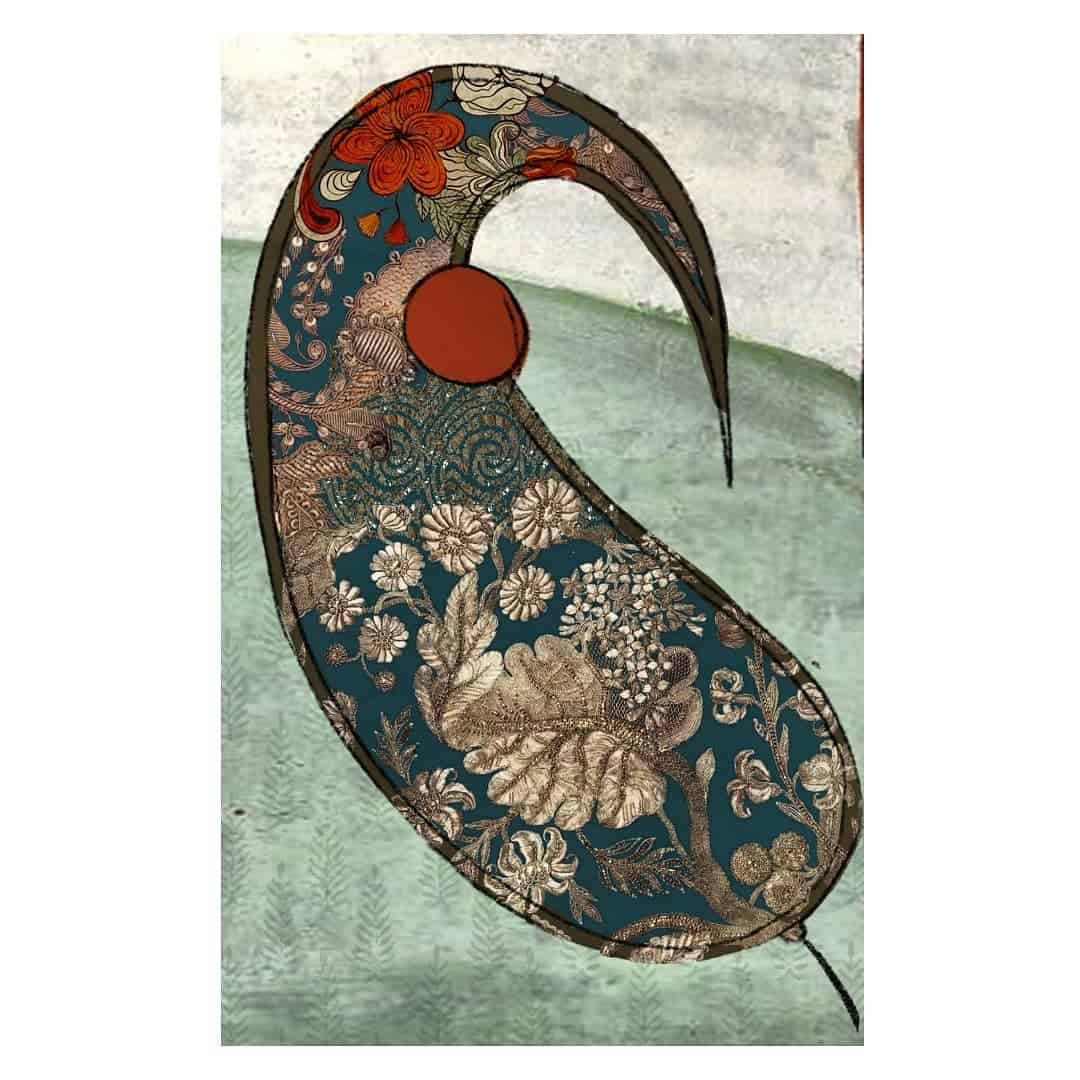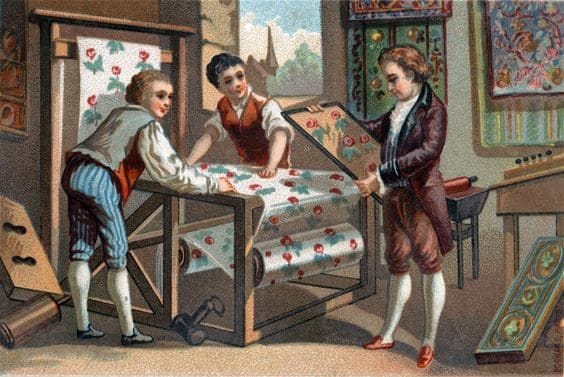Cotton, the wonder fiber, was at the start of history, found in two parts of the world—India, and Peru, as has been inferred from the study of old inscriptions and arts. Sir George Watt, a Scottish Botanist who worked in India as a reporter on botany, has shared very early research that says cotton was considered sacred in India. In those times, the word used for cotton was ‘karpasi.’ The sacred threads of a Brahman were made of ‘karpasi’ to put on over his head in three strings. (more…)
Embroideries of Kashmir: A couple of weeks back, I shared a breathtaking video made by the Google Arts & Culture Institute on the Sozni Embroidery from Kashmir. The video gathered a lot of love and likes on Facebook and Instagram.
The valley of Kashmir with its beautiful flora and fauna is resplendent with nature. Therefore the embroideries or textile designs from Kashmir have always been largely inspired by the floral beauty of the valley.
Punk : The idea of perfection and details in designs are an intrinsic part of cultural crafts. This refined look of crafts has always fascinated me until the current prolonged situation with the pandemic made me realize why isn’t design in crafts used for ‘activism’ or ‘rebellion’ or a cry for help for the change of current systems. I was inspired to think more in this direction after I recently revisited the Met’s spring 2013 Costume Institute exhibition, PUNK: Chaos to Couture, which examined Punk’s impact on high fashion from the movement’s birth in the early 1970s. In this article, let us learn more about this exhibition and PUNK! (more…)
Indian Floral : For centuries, plants and flowers have inspired Indian artists of different genres. The lotus flowers and floral meanders depicted in the Buddhist sites dating back to the 3rd century, the depiction of Hindu God Vishnu on a throne of a lotus flower, and the famous paintings of Ajanta and Ellora caves from the 5th century are the most excellent and oldest examples depicting florals in Indian Art. However, florals did not become the design language for Indian textiles for a long time, not until the beginning of the Sultanate Period in the twelfth century when Islamic culture started influencing Indian art & design.
I will start teaching my first course on ‘Collaborative Design with Artisans’ as an Adjunct Professor at FIT from the coming Saturday. This new opportunity encouraged me to read about handmade textiles from a global perspective. I read some exciting books from the V&A Museum’s Textile and Fashion collections. It is a very enriching experience to learn from other cultures. This reading and research have helped us enhance our design approach and library at Marasim. As I am hopeful, it will also help further the knowledge of my soon to be students.
How did this small town come to be known as the best in the history of Hand Blockprinting?
 It was usual for the Rajasthan medieval elites to have musicians, artists, and craftsmen associated with their family. The artists were attached to their patron’s family. They would create a whole gamut of objects and arts in-house for family-like jewelry, clothes, music, bangles or prints, etc. Sanganer became a land of great artists and patronizing families. Whenever the king or the ruler needed something particular, word of mouth would search for unique skillsets. The best artisans would be found and sent. The selected printers and dyers would prepare a new design or a new shade of color for their king. And that’s how the skills of the artisans of Sanganer became known and sought by higher nobility.
It was usual for the Rajasthan medieval elites to have musicians, artists, and craftsmen associated with their family. The artists were attached to their patron’s family. They would create a whole gamut of objects and arts in-house for family-like jewelry, clothes, music, bangles or prints, etc. Sanganer became a land of great artists and patronizing families. Whenever the king or the ruler needed something particular, word of mouth would search for unique skillsets. The best artisans would be found and sent. The selected printers and dyers would prepare a new design or a new shade of color for their king. And that’s how the skills of the artisans of Sanganer became known and sought by higher nobility.
This type of patronage was not just a way for economic sustenance for artisans, but also a peek into the outside world, offering the artisans a channel for aesthetic inputs.
 Sanganer Hand Blockprinting: Like every other textile lover, I visited Jaipur searching for exquisite ‘vintage’ textiles, decorated with hand block printed florals in gorgeous shades of aged reds, greens, and indigo from the era of nobility and generous patronage in the history of Jaipur. I ended up traveling 13 km away from the central city to get to this self-contained city of Sanganer packed with old structures and temples of great details and architecture. It is a town known for its unique ‘sanganeri’ hand block printing technique. It was revelatory to stumble onto Sanganer’s various sister crafts like handmade papermaking, gold and silver foil making, and cotton weaving. The small town has its artisanal ecology.
Sanganer Hand Blockprinting: Like every other textile lover, I visited Jaipur searching for exquisite ‘vintage’ textiles, decorated with hand block printed florals in gorgeous shades of aged reds, greens, and indigo from the era of nobility and generous patronage in the history of Jaipur. I ended up traveling 13 km away from the central city to get to this self-contained city of Sanganer packed with old structures and temples of great details and architecture. It is a town known for its unique ‘sanganeri’ hand block printing technique. It was revelatory to stumble onto Sanganer’s various sister crafts like handmade papermaking, gold and silver foil making, and cotton weaving. The small town has its artisanal ecology.
Paisley is a genuinely global motif that survived many years, passing through various cultures, evolving into many shapes, names, and colors. The credit for this goes to the endless love of this motif from the tastemakers worldwide. This article traces the origin, movement, evolution, and beauty of this antique motif, which is still a design identity of fashion and home companies from ‘Etro’ in Italy to ‘Kashmir Loom’ in India.

In 1785 Christophe-Philippe Oberkampf invented the first machine for printing wallpaper, later printing on cotton fabric at his factory in Jouy-en-Josas, hence the prints were known as Toile de Jouy
The term ‘Toile de Jouy’ (meaning, “cloth from Jouy”) refers to the printed cotton produced by the Oberkampf textile manufactory at Jouy en Josas in Normandy from 1760 to 1843. It is most often associated with a Rococo pattern of Shepherds and shepherdesses encircled with floral garlands, usually in blue or pink, on a white background. The term is generic and encompasses a wide range of designs from Neoclassical to more generalized floral patterns.
The Origin of Madras Checks Fabric
Around the 12th century, Madras Checks was a piece of handloom clothing for India’s peasant class in the village called Madraspatnam (Madras now Chennai). The local weavers would extract the soft fibers from the “tip-skin” of native trees to weave 36″ wide square handkerchiefs, which were then block printed with bright colored check patterns. They were worn as a garment similar to a sarong wrapped around the waist and extending to the ankles, called a lungi.
Chikankari Embroidery, A Lucknawi Tradition.
As I turned the pages of Paola Manfredi’s pioneering book on the past and present of Chikankari Embroidery, one of the most luxurious and evergreen traditional embroideries from the Indian Subcontinent, I feel proud of the culture that has patronized the excellent details and flair for this artistry. Nonetheless, the attention to detail is so nuanced( whether it is a small-cap or a full bodice) that I believe it will be an injustice to the research and images shared in the book if one attempts to discern everything in one read. (more…)



